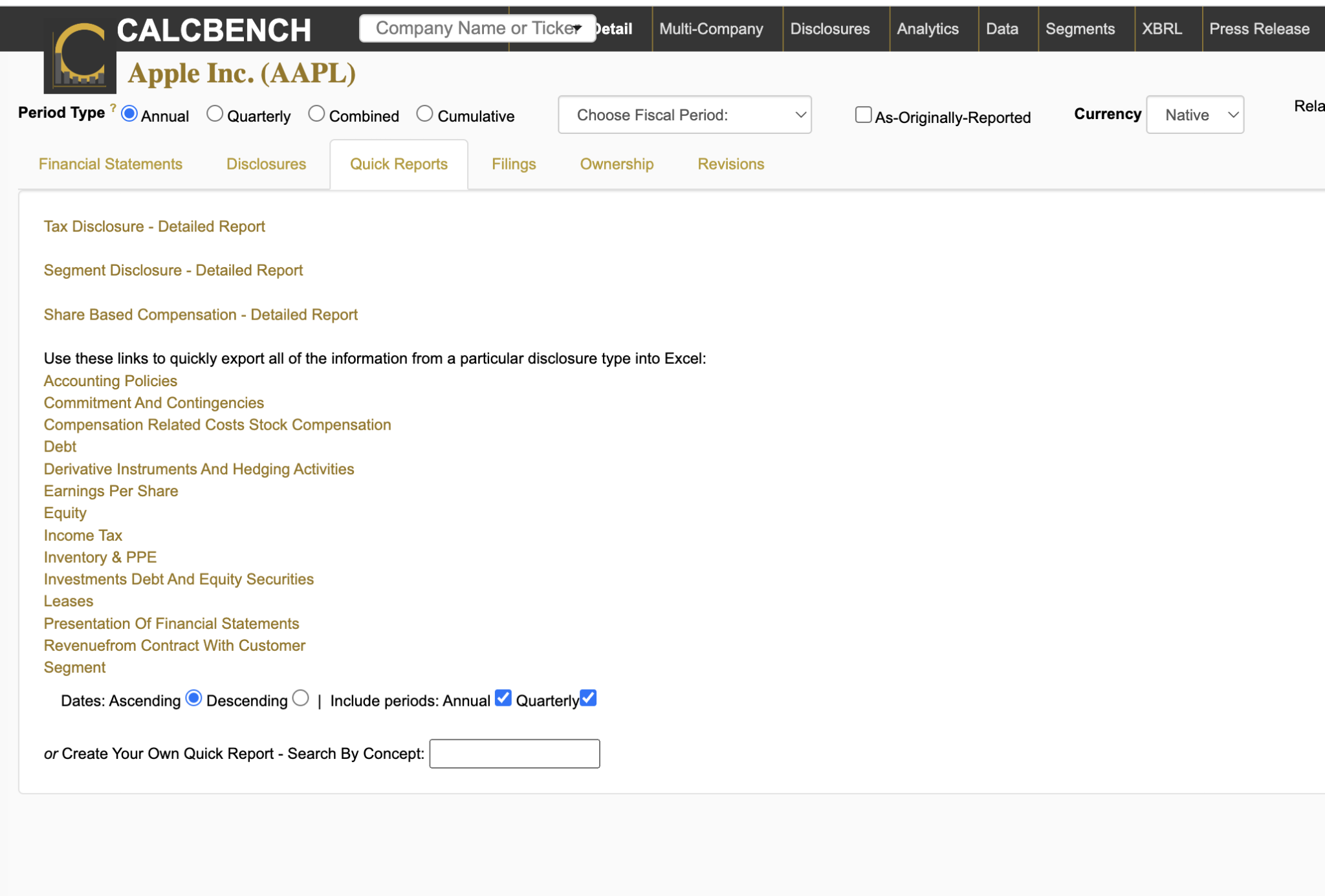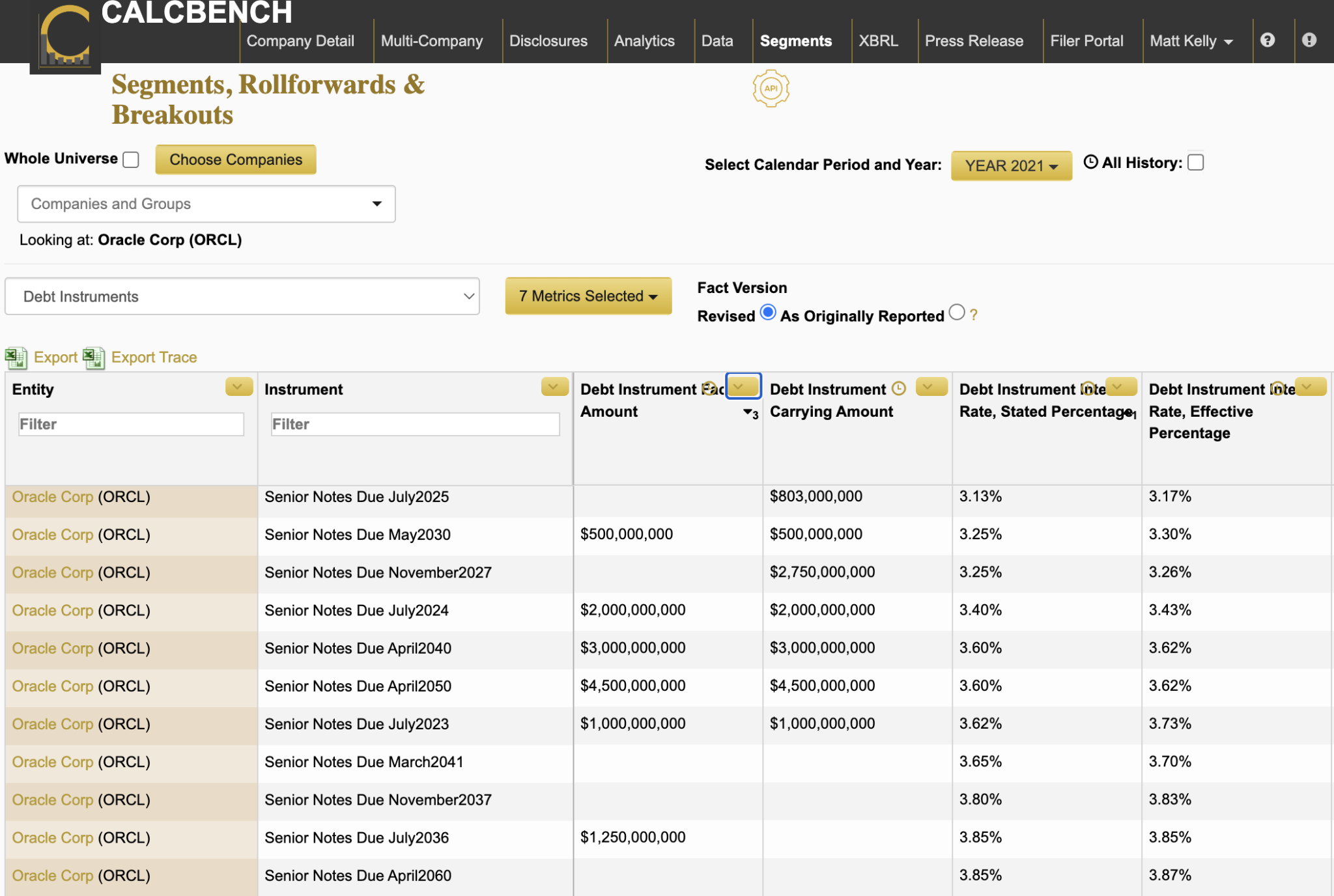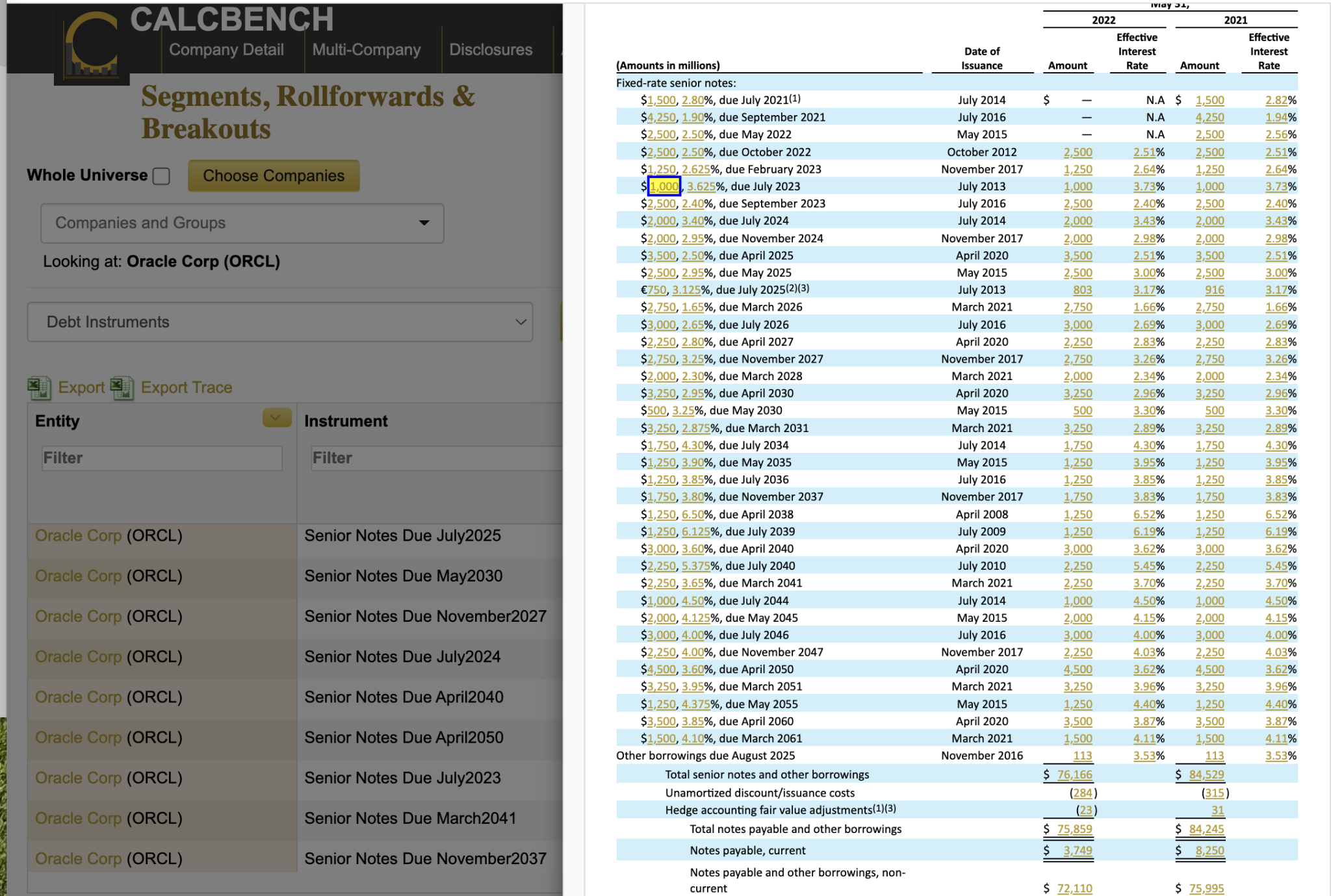Our next post on corporate debt is more about practical advice for Calcbench subscribers: a look at the tools you can use within the Calcbench website to find disclosures about corporate debt for the companies you follow.
If you want data from a group of companies, one place to start is our Multi-Company page. First, select the group of companies you want to research. (We have an entire post dedicated to creating a peer group if you need a refresher.) Once that group is set, you can choose from any number of debt-related disclosures we include in our Standardized Metrics field on the left-hand side. Those disclosures include:
- Total debt
- Short-, long-, and medium-term debt
- Floating-rate debt
- Debt-to-equity ratio
- Interest payable
- Interest expense
Just enter the disclosure you want to research, and presto! Those disclosures will populate for every company in your peer group (assuming the company made those disclosures for the period you’re researching).
Researching Single Companies
You can always use the Multi-Company page for a single company’s disclosures, too; just set your peer group to that sole company. But we also have numerous other ways to research debt disclosures one company at a time.
On the Company-in-Detail page, you can research what the company reports on the income statement and the balance sheet. This approach is somewhat hit or miss, because not all companies report interest expenses on the income statement — although all companies do report debt on the balance sheet. You can pull up the disclosures for the company you follow and see what it reports in the primary financial statements.
If you want a truly deep dive into the debt data, you can also run a Calcbench “Quick Report,” which will export all the debt data we have on your company into an Excel spreadsheet. To do this, click on the Quick Reports tab and then look for the debt report option. See Figure 1, below.

Be warned, this option gives you a lot of data. We selected Apple ($AAPL) at random, and the resulting spreadsheet listed nearly 900 rows of data across dozens of columns — a separate data cell for each debt instrument Apple reported, for every quarter going back to 2013. Suffice to say that a company as large as Apple has many debt instruments, so yes, the Excel spreadsheet really did need to be that large.
You can also get a global sense of a company’s debt disclosures using our Segments, Rollfowards & Breakouts page. Start by selecting the specific company you want to research. Then select “Debt Instruments” from the pull-down menu of dataset options on the left side of the screen.
Figure 2, below, shows some of the results for Oracle ($ORCL).

Again, a lot of information is packed into these results. We give you a list of notes due, the amount, the stated interest rate, the effective rate, and other snippets of information about the date a debt instrument is due.
For example, we can see in Figure 2 that Oracle has a $1 billion loan coming due in July 2023 (July 23, to be exact) with an effective interest rate of 3.73 percent. Given where interest rates are today, does anyone expect Oracle will be able to refinance that debt at a comparable rate in six months’ time? Anyone at all?
For just about all the disclosures you see from the Segments page, you can also hold your cursor over the item and then use our world-famous Trace feature to trace that number back to its exact disclosure in the financial statements. When we traced that $1 billion debt instrument coming due in July, the resulting chart in Figure 3 quickly appeared.
If you squint at Figure 3, you can see one item high-lighted in yellow. That is the original $1 billion number from the Segments results, traced back to the most recent disclosure Oracle made in its footnotes — along with all the other debt instruments Oracle also reported.

That brings us to our final method to research debt disclosures: by looking in the footnote disclosures directly.
Start with our Interactive Disclosures database. Select the company and specific period you want to research. In the list of Notes to the Financial Statements, look for something along the lines of Notes Payable and Other Borrowings (the headline Oracle used), and you should see the full table of debt disclosures. For example, looking up that disclosure for Oracle would present the same table in Figure 3, just a bit larger and more readable.
Not all companies label their debt disclosures as Notes Payable. Many do, but others might label them as Debt, Debt Instruments, or perhaps some other title. Keep your eyes peeled and your mind open, but the data will be in there somewhere.